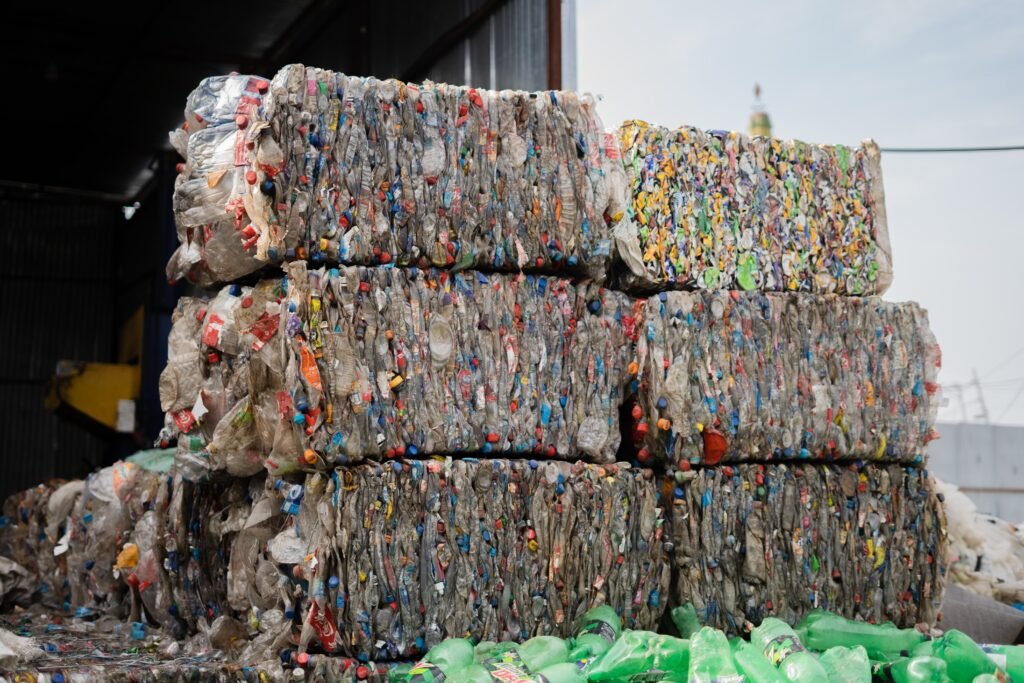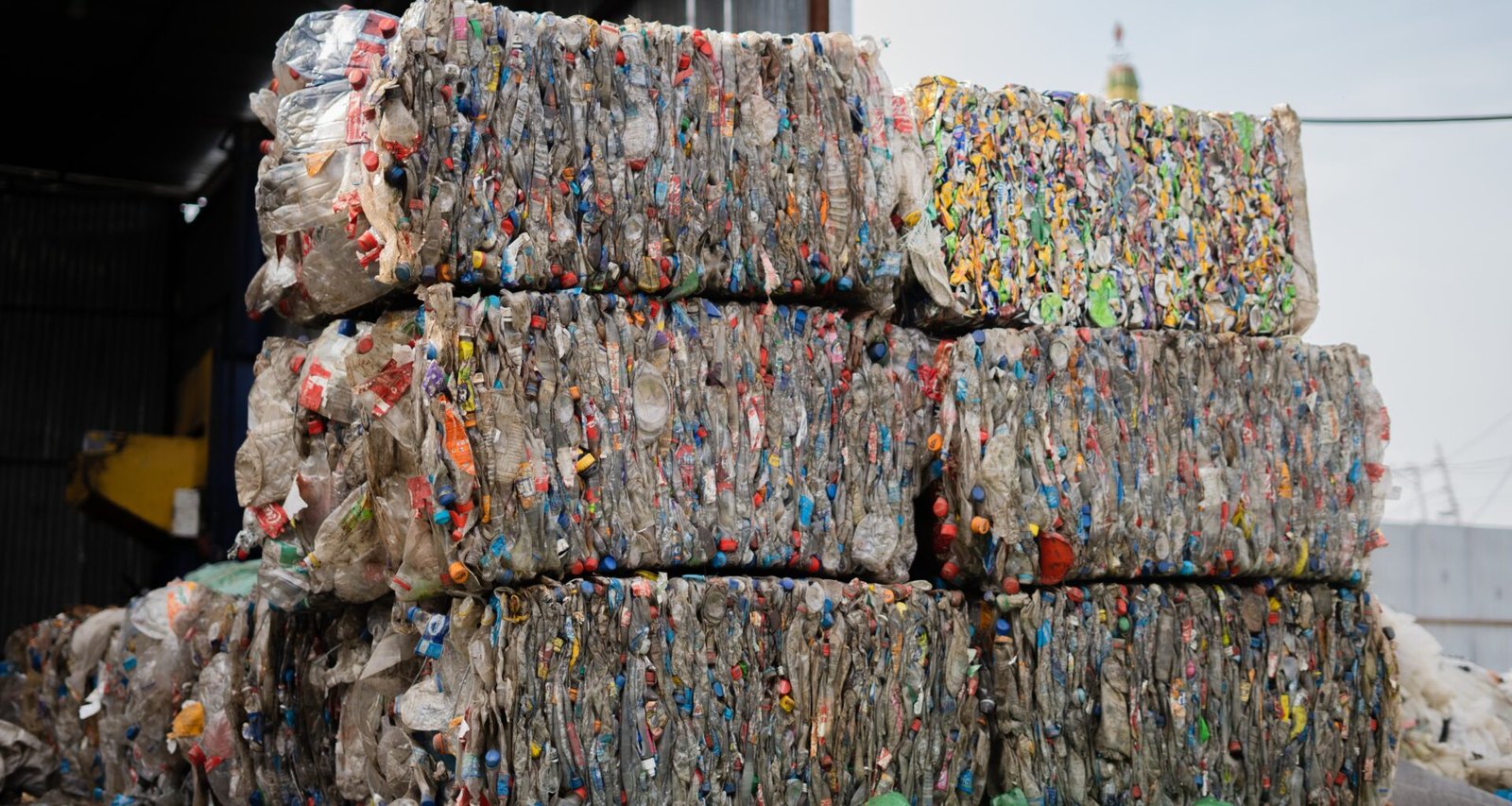Pollution has forced people to look for innovative solutions in our ever-changing environment. The amount of waste being produced is increasing, and the environmental effects call for a paradigm shift in garbage management. By using a variety of strategies, the notion of turning trash into treasure has promise for lowering pollution. This novel approach lowers pollution while recycling garbage to produce useful resources.
A tribute to human ingenuity, Trash to Riches features innovative technology that recycles plastic waste into construction materials as well as neighborhood-based recycling and reuse initiatives. As we investigate these new methods, we discover a tapestry of concepts bound by sustainability, a testament to our dedication to protecting the planet for the coming generations.

Table of Contents
- The Paradigm Shift: From Trash to Treasure
- Technological Marvels: Converting Waste into Valuable Resources
- Plastic Revolution: Transforming Ocean Pollution into Sustainable Products
- Bioconversion: Harnessing Nature’s Power to Degrade and Recycle Waste
- Empowering Communities: Grassroots Initiatives for Recycling and Repurposing
- Circular Economy Models: Redefining Production and Consumption Patterns
- Artistic Alchemy: Creative Reuse of Trash in Art and Design
- Educational Frontiers: Fostering Environmental Awareness and Responsibility
- Economic Viability: Profitable Ventures Built on Recycling and Upcycling
- Challenges and Future Prospects in the Treasure-from-Trash Movement
- Conclusion
The Paradigm Shift: From Trash to Treasure
A key development in environmental sustainability is the paradigm shift from waste as garbage to waste as a treasure trove. Inconvenient and usually environmentally damaging, waste disposal has long been a problem. The new paradigm, however, views waste materials as valuable resources that may be recovered, utilized again, and incorporated back into the manufacturing process. Beyond waste management, this action incorporates the circular economy. Waste is reduced and material usefulness is increased as opposed to the traditional “take, make, dispose” method. Materials may have several lifecycles since durable and reusable products are designed.
Structure, technology, and cultural changes are all part of the transformation. Waste products have value, which people, businesses, and governments must recognize. Innovative recycling and creative repurposing methods that transform trash into new products are made possible by this transformation, which also spurs innovation. We can lessen pollution and build a sustainable future by switching our perspective from waste to treasure.
Technological Marvels: Converting Waste into Valuable Resources
Technological innovations are revolutionizing pollution reduction by turning trash into useful resources. This paradigm change has enabled breakthrough waste management approaches that address environmental deterioration and resource shortages.
Advanced recycling methods like pyrolysis and plasma gasification are promising. These advanced techniques turn plastics, electronics, and toxic trash into valuable commodities. Polymers may be broken down into molecular components and used as industrial raw materials, minimizing the need for virgin resources. Anaerobic digestion produces sustainable biogas from organic waste.
These technological wonders reduce greenhouse gas emissions, energy production, and garbage buildup. Their combination of environmental responsibility and industrial innovation promotes a circular economy that conserves resources and reduces environmental impact. While these technologies grow, their promise to transform waste management and sustainable resource usage remains a beacon of hope, showing human ingenuity’s ability to convert garbage into a sustainable future.
Plastic Revolution: Transforming Ocean Pollution into Sustainable Products
In the face of rising ocean pollution, the Plastic Revolution inspires environmental care. This effort transforms ocean trash into valuable resources, fueling a sustainable paradigm change.
Wake Up Global Movement: From Threat to Opportunity
- The Plastic Revolution is a worldwide awakening, not just a technological answer to pollution. This movement addresses plastic pollution and inspires a global effort to restore our seas and protect Earth’s delicate ecosystems by turning marine garbage into usable resources.
Creative Potential Unleashed
- The Plastic Revolution uses human creativity to solve a problem we created. Innovative brains are finding methods to reuse and recycle plastic garbage in our seas. Ocean plastics are cleaned, processed, and turned into garments, accessories, building materials, and consumer items using cutting-edge procedures. This creative transformation is ecologically and economically sustainable, opening new sustainable innovation frontiers for industries.
Promoting Corporate Responsibility
- The Plastic Revolution is transforming business. Businesses are realizing the significance of eco-friendly operations as customers prefer sustainable goods. Ocean plastics in manufacturing reduce waste and meet ethical customer standards. This movement might change whole sectors by encouraging them to be more responsible and eco-friendly.
A Call for Systemic Change
- Individual and corporate initiatives are crucial, but the Plastic Revolution’s influence goes beyond product design and customer choices. It emphasizes policy and regulation-driven systemic transformation. Governments and industry worldwide are urged to restrict plastic manufacturing, promote recycling, and make manufacturers responsible for their goods’ lifecycles. This collaborative change campaign shows the Plastic Revolution’s ability to affect laws and policies.
Bioconversion: Harnessing Nature’s Power to Degrade and Recycle Waste
Bioconversion shows how nature may solve our waste problem. This novel method uses microbes and enzymes to break down organic waste into useful resources. Bioconversion replicates natural processes by using biological agents to decompose complex organic molecules and redirect them from landfills and incinerators. Controlled breakdown of food scraps, agricultural leftovers, and sewage sludge is used in this eco-friendly process. Composting or anaerobic digestion breaks down these components into simpler molecules by bacteria and fungus.
Humus from composting improves soil quality and supports sustainable agriculture. However, anaerobic digestion provides biogas, a sustainable energy source mostly consisting of methane, for power and heating. Bioconversion solves several environmental issues. It decreases landfill trash, greenhouse gas emissions, and fossil fuel consumption. Additionally, it illustrates the circular economy, which turns trash into resources in a sustainable loop. Bioconversion shows how science and nature may work together to manage waste sensibly. Microorganisms and enzymes may help us improve soil fertility, produce renewable energy, and reduce our impact on the environment.
Empowering Communities: Grassroots Initiatives for Recycling and Repurposing
Community empowerment via grassroots efforts has been effective in reducing pollution. These local projects might change garbage management and promote environmental awareness. Participation and ownership have a ripple effect beyond the person. These projects encourage locals to recycle and repurpose via community-run recycling facilities and seminars. They reduce waste by fostering creativity and ingenuity to turn trash into treasures.
These activities affect more than trash management. Sustainable practices and their environmental effect are taught in these community seminars and campaigns. These activities foster responsibility and awareness, affecting long-term behavior. Community relationships are also strengthened through grassroots efforts. Shared goals unite different people, fostering collaboration beyond environmental issues. As these projects grow, they impact local policies and practices, guiding society toward sustainability.
Grassroots efforts enable communities to change. These projects increase pollution reduction by encouraging active participation, awareness, and cooperation, sparking a groundswell of change that promises a cleaner, greener future.
Circular Economy Models: Redefining Production and Consumption Patterns
Circular economy models are imaginative plans for comprehensive sustainability that go beyond linear consumption. Circular economies encourage resource regeneration to reduce waste and environmental effect while increasing material value, unlike the linear “take-make-dispose” approach. These models emphasize product design. Items are carefully made for longevity, repairability, and recycling. This move forces firms to rethink manufacturing methods and use deconstructed, reusable materials. Instead of abandoning things, users are urged to repair or recycle them, completing the loop and saving virgin resources.
Circular economy models boost industry innovation. They need modern recycling systems to recover materials from end-of-life items. Chemical processes break down complicated materials into reusable components, such as converting electronic trash into metals.
Artistic Alchemy: Creative Reuse of Trash in Art and Design
The notion of creative alchemy combines environmental awareness with artistic expression to redefine creativity and combat pollution. This novel method turns rubbish into beautiful art and design, demonstrating the beauty of waste. Creative alchemy gives abandoned items new life and worth. Scrap metal, plastic, fabrics, and electronics are used by artists and designers. This eliminates waste and emphasizes consumer culture’s transience.
Using elements that might otherwise harm ecosystems or clog landfills, creative alchemy symbolizes sustainability. It challenges aesthetics and inventiveness by proposing novel waste solutions. It also makes viewers think about their buying habits and how to rethink ordinary things’ lifecycles. The message of artistic alchemy goes beyond aesthetics. It sparks questions about sustainability, consumerism, and resource management. These art pieces spark discussions on environmental challenges, connecting art, design, and society.
Educational Frontiers: Fostering Environmental Awareness and Responsibility
Educational boundaries are becoming crucial venues for environmental awareness and responsibility as the worldwide demand for sustainability grows. This school reform recognizes the need to prepare today’s and tomorrow’s generations to address complex environmental issues. This trend incorporates environmental concerns into scientific and literary curriculum. Students get deeply connected to nature through learning about ecosystems, climatic dynamics, and biodiversity. These frontiers rely on experiential learning. Hands-on activities, outdoor adventures, and community participation show children how human actions affect the environment. Interactive digital tools make learning immersive thanks to modern technology. Online tools and virtual field tours widen global environmental challenges and solutions.
These educational frontiers aim to create environmentally aware individuals with the skills and ambition to make sustainable change. These programs create a generation dedicated to protecting and rebuilding the earth by promoting ecological knowledge, ethical consumerism, and accountability. These educational efforts influence choices and behaviors that contribute to a sustainable future for everybody, well beyond the classroom.
Economic Viability: Profitable Ventures Built on Recycling and Upcycling
Recycling and upcycling businesses are growing due to environmental responsibility and economic feasibility. These enterprises reduce waste and demonstrate sustainability’s economic development potential. Recycling has grown from a specialty to a major sector. Recycling companies provide manufacturing processes by collecting, sorting, and processing recyclables. Environmental concerns and resource constraints stimulate recycled material demand, which boosts market rivalry and innovation. Recycling takes unwanted objects and turns them into valuable goods via upcycling. Consumers seeking distinctive, eco-friendly alternatives to mass-produced items like this idea.
Upcycled items are expensive, balancing revenue and environmental protection. Business strategies also reflect the circular economy’s focus on resource efficiency and waste reduction. Forward-thinking organizations use closed-loop technology to increase product life and reduce waste. These models build brand loyalty and distinguish companies in an eco-conscious market. Regulations and incentives from the government boost economic viability. Recycling and single-use plastic levies encourage firms to adopt sustainable practices. Such actions boost recycling eco-friendly packaging and material innovation.
Challenges and Future Prospects in the Treasure-from-Trash Movement
While the “Treasure-from-Trash” movement has the potential to turn garbage into useful resources, it faces obstacles and possibilities. Recognizing these aspects is essential to creating a sustainable future.
Challenges
Technical Challenges
- Waste-to-treasure conversion requires specialized technology. Developing and executing these procedures takes significant research, infrastructure, and professional labor.
Quality Control
- Waste-derived products must be safe and high-quality. To prevent dangerous or inferior items from accessing the market, strict quality control is essential.
Customer behavior
- Changing customer behaviors and views is difficult. Education and awareness efforts are needed to encourage recycling and garbage sorting.
Economic Viability
- Profitable projects may be difficult to mix with environmental responsibility. The initial expenditures of recycling and upcycling and market demand variations might hinder profitability.
Future prospects
Innovation and Collaboration: Technology will increase waste-to-resource efficiency and sustainability. Industry, university, and government collaboration will drive innovation.
Circular Economy Integration
- The circular economy will grow. As awareness rises, companies may adopt circular processes to reduce waste and promote sustainable product design.
Policy Reforms
- Governments will shape waste management’s future. Environmentally friendly sectors may benefit from stricter plastic manufacturing restrictions, producer accountability, and sustainable practices.
Consumer Education
- Environmental awareness will boost demand for treasure-from-trash items. Consumer education may change market patterns and encourage sustainability.
Global Awareness
- The movement’s potential influence on climate change and resource depletion is drawing international attention. Multilateral and collaborative efforts should boost the movement’s impact.
Technological innovation, regulatory changes, public involvement, and cross-sector cooperation are needed to address these issues. The treasure-from-trash movement may change our view of garbage and lead to a more sustainable, resource-efficient, and ecologically conscientious society.
Conclusion
The path from trash to treasure changes our pollution reduction and resource management strategies. Technology, grassroots efforts, creative recycling processes, and extensive awareness campaigns have created a movement that defies convention. We are at a crossroads as we harness nature’s potential, adopt circular economy ideas, and boost economic viability via recycling and upcycling.
While obstacles remain, the treasure-from-trash movement has great potential. It envisions a world where abandoned materials are treasures waiting to be found. As people, communities, corporations, and governments adhere to these ideas, we create a cleaner, more sustainable world. Through innovation, teamwork, and conscientious consumerism, we can turn garbage into gems that benefit economies and repair the earth for future generations.








